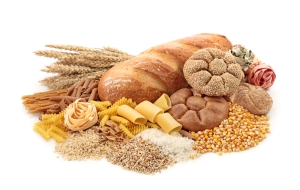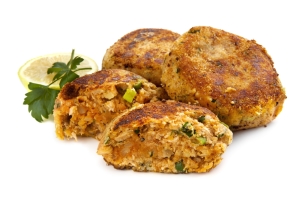
From our Nutritional Expert – Suzie Sawyer
 There is so much written in the ‘popular press’ about the ‘balanced diet’ but what does this actually mean?
There is so much written in the ‘popular press’ about the ‘balanced diet’ but what does this actually mean?
As with clothes, it’s certainly not ‘one size fits all’. We’re all individuals with our own unique body bio-chemistry. However, there are a few guidelines which will go some way towards achieving a balance, and which, most importantly, will keep energy levels sustained throughout the day.
Here’s our favourite five!
 Tip 1 – Eat slow release carbohydrates
Tip 1 – Eat slow release carbohydrates
In very simple terms, all food is eventually turned into glucose, the body’s main fuel, but it is particularly needed for the brain. However, some foods, especially white bread, white pasta and white rice, together with sugary cakes and biscuits are turned into glucose, quickly producing a ‘sugar high’. However, every high brings a low; this manifests itself as low energy, low mood, irritability and poor concentration.
Conversely, eating foods such as oats, beans, brown rice and wholewheat bread and pasta, which are broken down into glucose much slower, will ensure energy levels are sustained throughout the day. Try to avoid the ‘white’ and stick to ‘brown’ foods as much as possible!
Tip 2 – Eat protein at each meal
Protein is not just for body builders! Protein is essential for producing hormones, maintaining a strong skeletal frame and general body repair. Additionally, collagen which is the body’s main structural protein also gives the face its shape and, therefore, helps to keep those wrinkles at bay!
An average diet should contain around 80 g of protein daily. This means eating some protein at every meal. Good sources are white or oily fish, chicken or turkey, lean meat, eggs or dairy products. For vegetarians, soya-based foods, beans, tofu, quinoa or lentils all provide good amounts of protein. However, do bear in mind, if you’re vegetarian, that you need to be combining grains and beans to obtain the right balance of protein, although these don’t need to be eaten in the same meal.
For those that suffer the mid-afternoon energy slump, eating some protein at lunchtime will help keep you ‘wide-eyed’ through the rest of the day. Always remember that it’s protein that keeps you feeling fuller for longer.
 Tip 3 – Aim for your ‘five a day’
Tip 3 – Aim for your ‘five a day’
We hear it said often but why is it so important? The reasons are many and varied. However, regardless of anything, fruits, and especially vegetables, are some of the most nutrient-dense foods available. Many are packed with vitamin C, especially red peppers, tomatoes, strawberries and citrus fruits, but, most importantly green leafy vegetables are particularly high in minerals, particularly calcium and magnesium.
Think of each meal as an opportunity for getting more nutrients into the diet. Additionally, there is a wealth of antioxidants in all fruits and vegetables which help protect the body against the daily onslaught of free radicals. And, best of all, they taste great! Prepare and roast a tray full of vegetables which you can add to dishes or eat cold for a healthy lunch.
There’s no getting away from it! Breakfast is the most important meal of the day. After a night of ‘fasting’, blood sugar levels are low. The body and, most importantly, the brain need fuel. Many people will reach for a banana or a cereal bar but these will just produce a sugar rush and then an energy low. Equally, you’ll be hungry again in about an hour so you will start grazing; this will set up a pattern for an energy rollercoaster throughout the day.
It is much better to start the day right, with a good balanced breakfast, which includes some protein. A bowl of porridge, which contains slow-release carbohydrates from the oats with a dessertspoon of plain soya yoghurt and some berries or, alternatively, poached eggs on whole meal toast, are both great options and will keep you feeling fuller for longer. Adding a teaspoon of cinnamon to your porridge will keep your blood sugar levels balanced, and more importantly, will lessen any sugar cravings.
 Tip 5 – Eat at regular intervals
Tip 5 – Eat at regular intervals
The body likes to know that it’s going to be fed at regular times throughout the day. Missing meals, going on low-calorie diets and eating at erratic times of the day, especially after 8 pm in the evening, will encourage weight gain. This is because the body has an innate drive to survive. Any sense of starvation and it will quickly start to store fat.
The best advice is not to go for longer than three to four hours without food to further ensure that your energy levels remain stable throughout the day. If you know that it’s going to be difficult to eat at lunchtime, as a suggestion, why not boil up some quinoa – a great source of protein – the night before and just add some salad vegetables, together with an avocado to fill the lunchtime void.
As with all things in life, it’s all about balance! However, making some simple changes to your diet, can have some really positive effects on your energy levels!
























